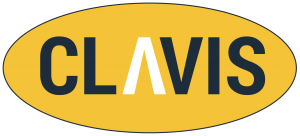There’s growing demand for frozen goods — 2019 alone saw £6.3 billion pounds in frozen food sales in the UK — and refrigerated trucks are on the frontline. Here, I explain the vital role of belts in the refrigerated transport market and how lasers could be vital to improving how they perform.
Belts and pulleys are vital in many applications. In cars, for example, the serpentine belt, which passes over more than three pulleys, transfers power from the crankshaft to all accessories in the serpentine system. This includes power steering, water pumps, air conditioning (A/C) compressors and alternators. Poor belt performance can cause these systems to malfunction or, in the worst case scenario, the engine to break down.
Similar systems are found in refrigerator drive belts, including in trucks transporting chilled or frozen goods. Unlike normal drive trains, belts in cooling units must provide non-stop performance with low maintenance. After all, the refrigeration unit has to maintain below freezing temperatures, even when the truck is parked in a lay-by.
Yet, there is an issue that original equipment manufacturers (OEMs) need to address. For far too long, preventative maintenance of these critical systems has been overlooked.
Don’t slip up
One common issue in belt systems is insufficient belt tension. This can cause the belt to slip, or cause heat to be inducted into the belt and engine system. This results in loss of system performance, noise and can cause system failure.
Too much tension, on the other hand, can also result in excessive belt wear, increased belt temperatures and premature belt failure.
“Unlike in normal drive trains, belts in cooling units must provide non-stop performance with high reliability and low maintenance.”
Aside from belt tension, the other major consideration is correct alignment of all the elements in the belt and pulley system. There are two types of misalignment: parallel and angular.
Parallel misalignment, as the name suggests, is when pulleys in the serpentine system are not aligned. For the belt to work to its full potential, all the pulleys must be positioned on a common plane.
Angular misalignment is when the shafts of the pulleys are not parallel. This can create belt tracking problems, excessive wear, noise and belt stability problems. In fact, in car serpentine systems, this report by Tech Tips says that just a few degrees of misalignment can increase belt temperatures by 30 degrees Fahrenheit and reduce belt life by as much as 50 per cent!
So, proper alignment of the pulleys and shafts is absolutely vital.
Whole lifecycle
To close the preventative maintenance gap,OEMs must consider the whole lifecycle of belt and pulley systems. Problems with belt tension don’t just arise from the time the belt is installed but can be caused by a lack of continual maintenance.
Factors that influence belt tension can also change over time. For instance, problems with heat can cause heat-ageing in the belt. These changes can reduce the adhesion the belt applies to the pulleys, increase the chance of slippage and the rate of wear.
So, how can engineers address these issues? The answer, believe it or not, is with lasers.
Laser focus
Laser measurement technologies are revolutionising manufacturing. We are no strangers to this at Clavis, and use lasers in a controlled production line environment to ensure the pulley alignment is within specification.
Our pulley alignment tool fits onto one pulley, where light is reflected by the second pulley into an image sensor. The laser scanner, a Micro-Epsilon scanCONTROL 29xx, then draws a 2D profile of the pulley onto the lineside PC.

As shown in this image, Clavis’ pulley alignment tool fits onto one pulley where light is reflected by the second pulley into an image sensor.
The combination of our laser pulley alignment technology and belt tension measurement equipment guarantees that each unit leaving the factory is within designed tolerances.
Our closed-loop Fourier Belt Measurement System (BMS) is designed to measure and accurately control the belt tension process from start to finish. A customised sensor head measures the belt tension by reading the frequency of the belt vibrating, taking a data measurement approximately once per second. Since frequency is proportional to tension, this can be used to set the tension of the belt.
Both systems are linked seamlessly with a lineside PC. This makes it possible to gather both alignment and tension data of the belt and pulleys, quickly and accurately.
“Laser measurement technologies are revolutionising manufacturing. We’re no strangers to this at Clavis. We use the power of lasers to combine belt measurement with pulley alignment.”
The FourierBMS system is also proven in mobile refrigeration systems, where temperature requirements can be tricky. Our client, Thermo King, the global leader in transport refrigeration, was the first to use of this technology and relies upon it to this day.
Thermo King needed a system that could handle temperature variations within their refrigeration system. We worked with the customer who supplied CAD data that enabled us to manufacture unique fixtures that fit their product, to measure the alignment of the pulleys and tension of the belt. In other words, our systems are bespoke rather than off-the-shelf.
When the unit is mounted, it stays in place and frees the operator to perform his tasks, like tightening the belt tensioning screw with a power tool driven by the FourierBMS controller. Crucially, we were able to design a sensor head that’s unique for Thermo King’s application.
As demand for frozen perishables grows, systems like the FourierBMS can ensure refrigerated lorries can keeping on trucking — knowing that their belts are properly tensioned and their pulleys are aligned.

